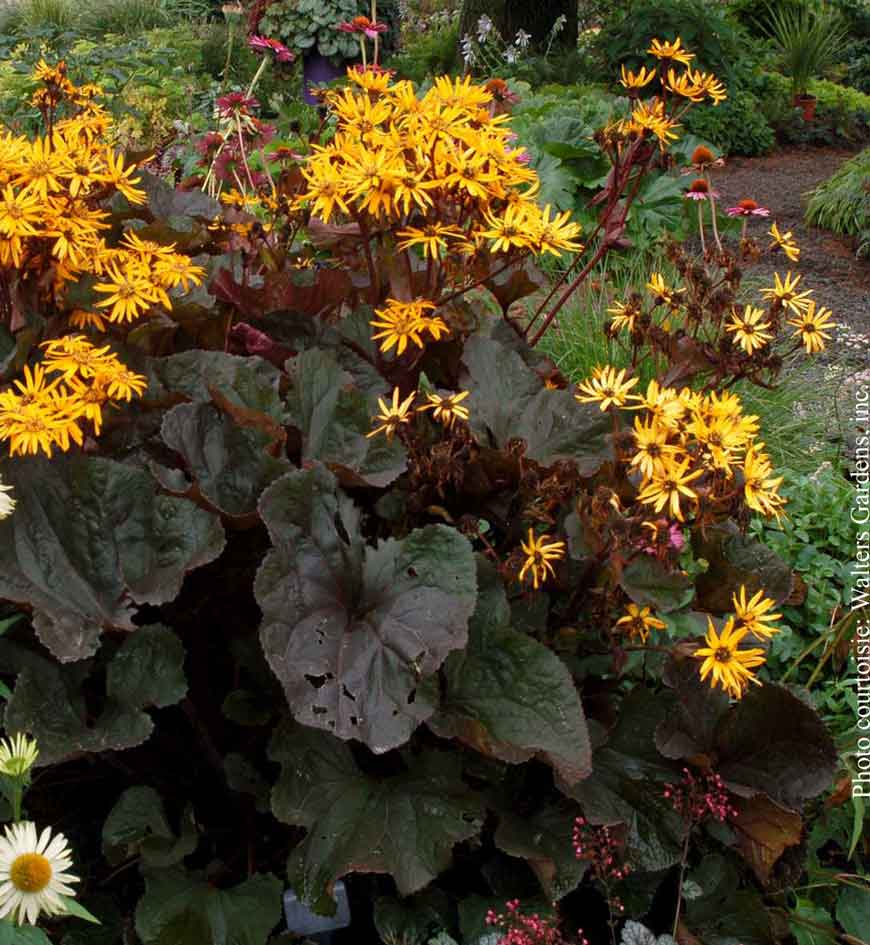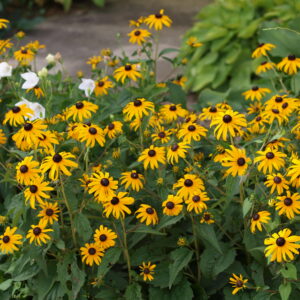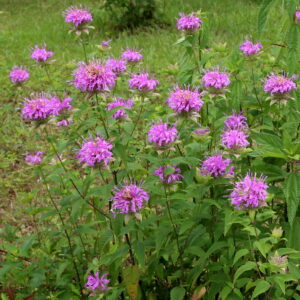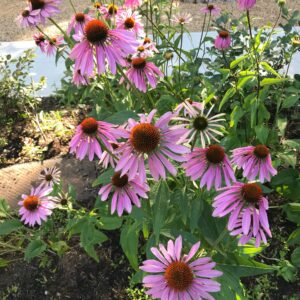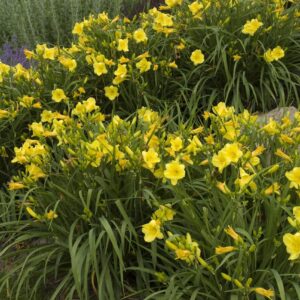Description
Leopard Plant Characteristics
Leopard plant is a genus of many species. See below for the two most common varieties in the Pittsburgh area.
'Britt-Marie Crawford' (pictured) are a clump forming, purple leaved variety. The dark purple leaves can almost appear black, with some green hues appearing with age. Orange, flat topped, daisy-like flowers bring great contrast to the foliage. 'Britt-Marie Crawford' are showy throughout the growing season.
'The Rocket' are is a tall variety with large flower spires. Large triangular leaves are as interesting as the yellow-orange flowers. The foliage grows into a mounded shape and provides ornamental value without the aid of flowers.
There are few serious disease or insect issues that plague Leopard Plant. Snails and slugs may snack on the leaves. Too much exposure to can and scorch the leaves or cause them to wilt.
-
USDA Climate Zone
Zones 4 - 8
-
Height
2.00 - 5.00'
-
Spread
1.50 - 4.00'
-
Bloom Time
June - July
-
Water
Medium - Wet
-
Sun
Part Shade - Full Shade
-
Maintenance
Medium
-
Deer Resistant?
Yes
